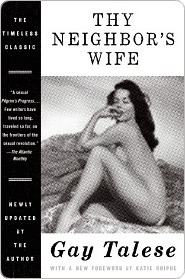In the late spring of 1972, while I was in the Air Force stationed in the Mojave Desert, I pulled into a scenic overlook not far from the Mount Wilson Observatory in the San Gabriel Mountains. I looked down on the twinkling expanse of Pasadena in the deepening twilight and wondered how many people were in love and making love right now below me? I felt a bittersweet feeling of grief for my own loneliness and yet a joy that people love each other and express it with sex. Mostly I felt an envious melancholy, sorry for myself that everyone was getting laid except me. Little did I know that if I had simply gone another 32 miles west, to the Santa Monica Mountains, to one of the overlooks on Topanga Canyon Road, I could have possibly looked down on pure bacchanalia.
 |
| Topanga Canyon Image Credit Wikipedia |
The Sandstone Retreat was located about 3 miles west of Topanga Canyon Road, which was one of my favorite scenic routes, although really, I was probably on the road only a half dozen times. Yet there I was living two hours away and I never heard of Sandstone Retreat until I read about it in Talese’s book, Thy Neighbor's Wife three weeks ago. Alas!
Alas? Not really, even if I could have afforded the membership fee, I doubt that the Williams would have wanted the likes of me, a skinny, lonely, callow Air Force buck sergeant mooning over the lack of love in his life. Even if they had taken pity on me and allowed me entry, I doubt I would have found what I was looking for. Oh sure I would have been wowed temporarily by the sex, but I think I would soon have discovered what I suspected then and know about myself now…it is not sex that makes a person like me happy. It is Love. Sex is a Sacrament of that Love, but without Love, sex is just a celebration of lust. If that is your thing, fine, I hold no great moral convictions regarding sex. As long as everyone is 100% informed and 100% on board, an enthusiastic yes, then do what floats your collective boat. Just don’t hurt anyone in the process. But I have come to learn something about myself, I am an oxytocin junky not a dopamine addict, and Love gets the oxytocin squirting for me. Warm, messy, plugged in, loving, fragrant post-coital bliss with my wife and I lying in a pool of oxytocin is Heaven on Earth for us, not the thrill of the novelty of yet another partner.
I feel personally indebted to the sexual revolution (what ever it is), and I enjoyed reading Thy Neighbor’s Wife because I have an almost hobby like interest in sex and sexuality like some people have for model trains or astronomy. I have never quite got over the awe struck dumb founded fascination for the tales I heard as a 9 year old boy about the games that big people play. “He sticks it where???? No way!!!!”
So reading Thy Neighbor’s Wife was sort of a cheap thrill of reading about the games that the really big people play. Ok I read this four decades after it was written so there was no great surprises of what goes on, yet with the quality of Talese’s writing, the level of detail that he went into, and his admission that not only was he an observer but a willing participant sort of got the lust hairs on the back of my neck to stand up and go woo-woo. I thought they had wore out from pure exhaustion over the onslaught of sexual imagery and innuendo of modern life. But when I finished the book, I got the uncomfortable, well actually for me a comfortable, feeling that none of this applies to me. It was like a trip into a weird amusement park that is somewhat thrilling while you are there, but you are more than happy to leave and never come back.
I am not quite sure what Talese’s goal was for this book. What was his point? To show how morality changed in America? To celebrate the Supreme Court decisions that now allow me to buy a copy of Fanny Hill on my Kindle for 99 cents, or Henry Miller’s Tropic of Cancer for $1.99. Years ago possessing these books would have got me arrested. So yes, I am glad I can purchase sexually suggestive if not downright filth and not worry about the likes of Comstock seizing my Kindle and burning it and tossing my ass into the klink. But I also find that I am a hell of a lot more grateful for the Supreme Court decision known as Griswold Vs Connecticut…from Wikipedia:
The case involved a Connecticut "Comstock law" that prohibited any person from using "any drug, medicinal article or instrument for the purpose of preventing conception". The court held that the statute was unconstitutional, and that "the clear effect of [the Connecticut law ...] is to deny disadvantaged citizens ... access to medical assistance and up-to-date information in respect to proper methods of birth control." By a vote of 7–2, the Supreme Court invalidated the law on the grounds that it violated the "right to marital privacy", establishing the basis for the right to privacy with respect to intimate practices. This and other cases view the right to privacy as a right to "protect[ion] from governmental intrusion".
In 1964 it was illegal to use a condom in Connecticut. Amazing! Yes I may enjoy reading Fanny Hill but believe me back in the day prior to menopause, I was far happier to be able to buy a box of condoms hanging out on an open shelf in the grocery store rather than whispering in the local pharmacist’s ear while judgmental old biddies stared and thought about writing their congressman over the lack of morals in our state. I was even happier to whisper in the pharmacist’s ear to get birth control pills which for a time were even covered by my employee hospitalization plan. So yes, I feel indebted to the sexual revolution.
I feel far more indebted to David Reuben than Hugh Hefner. Yes, I looked at my share of Playmates of the Month before I was married. But I never recall seeing a detailed photo or diagram of a vulva in Playboy with an arrow pointing to the clitoris with an explanation of the importance of it to a woman’s sexual satisfaction. Yes, I am sure that somewhere along the line Playboy had an article on how to pleasure a woman, but if you want to find out this afternoon and not wait for several years until Playboy got around to addressing it along with cars or polo clothes that I could never afford to buy, then maybe you needed a book like Everything You Always Wanted to Know About Sex: But Were Afraid to Ask. Was the book perfect? Did it have biases? Were gays ignored or treated poorly? (See edit below.) Yes. But still it was far better than the marriage manuals of my parent’s era that spoke of the proper way to engage in sex (penis in vagina, in the missionary position with the goal of mutual orgasm) and warned of dangerous perversions that lurked around any act that went beyond that narrow definition. Here is a favorite:
We have seen how body kisses may play an exaggerated part in sexual relations so that what should be part of the normal effort to induce pleasurable excitement in the partner becomes the whole, such kisses thus comprising the complete act. For those who replace coitus by the form of partial intercourse, cunnilinctus [sic] is often an act of self-abasement. It is the sign of a dog-like devotion. A masochistic male, one with the tendency towards finding pleasure in suffering and humiliation, moves by way of the perfectly normal body kisses to one of the byways which lead him away from normality. Eventually, he cannot enjoy full normal union. The part has replaced the whole. Page 251.
That is an excerpt from a book titled ironically Love Without Fear by Eustace Chesser. Well, call me a dog-like devotee! I don’t know about Eustace, but I tend to feel like the conductor of a massive orchestra and choir playing the final movement of Mahler’s Symphony number 2 during such activities. Masochism and humiliation for rocketing my wife down the yellow brick road off to Oz in paroxysms that shake the house? I have never had an orgasm that came close to the power of hers…I enjoy her orgasms far more than my own little putt putts. Perhaps proof that I am the big sissy the Chesser suggests.
So yes I feel a deep indebtedness to the sexual revolution that allowed my wife and I to have proper information and communication skills so that we were not fumbling around in the dark, or in fear or putting ourselves in a poor house with too many mouths to feed, or engaged in some sinful perversion that would anger God. I feel indebted to feminism that give women a voice and the beginnings of equality. So I feel indebted to the likes of Marie Stopes, Margaret Sanger, Alfred Kinsey, Masters and Johnson, Betty Friedan, Gloria Steinem (one of Hefner’s favorites), Estelle Griswold, David Reuben, Shere Hite, and yes in more indirect way even Betty Dodson. Most of these people, except Dodson, got little or no mention in “Thy Neighbor’s Wife.” All of them had their personal foibles, prejudices, and weidicities. People are victims of their times, yet they are the heroes of the sexual revolution to me, not Hugh Hefner or John and Barbara Williams.
To illustrate my point further, before Masters and Johnson the process of vaginal lubrication during arousal was not understood. Even after Masters and Johnson, the true size and shape of the clitoris was, depending on how you want to look at it, either unknown or forgotten. I find it incredible that William Masters, a gynecological surgeon, believed the clitoris to be the small external bud. Indeed when Thy Neighbor’s Wife was published in 1980 more was known about the dark side of the moon than the true topography of the clitoris. Helen O'Connell (another hero in my estimation) revealed the extensive internal structure in the mid 1990s.
So yes I feel an indebtedness to the sexual revolution, but felt very little appreciation for the facets that Talese discussed in Thy Neighbor’s Wife. It dimly occurs to me, that while I have rambled through a garbled description of my feelings of the book, I have stated very little about the book itself. For an excellent review of the book, may I suggest Matt’s review on Goodreads:
https://www.goodreads.com/review/show/73625966?book_show_action=false&from_review_page=1
The weird thing I have found with Matt, he knows and can write down in a review more about how I feel about a book than I am aware of. I often find myself seeking his reviews after I have read a book, to clear the cobwebs and tell me how I really feel about it. I gave it 4 stars on Goodreads.
Edit 1/3/2023: I just re-read Everything You Always Wanted to Know About Sex But Were Afraid to Ask. I have no idea why this book holds such an exalted place in my memory. Not much how to and a lot of information that while perhaps interesting reading at the time was more of a sexuality and society type of thing. Reuben's opinion of LGBTQ issues, especially gay males, is horrific. It is actually a pretty crappy book. Books are always prisoners of the attitudes and thinking of their time. But Reuben went over board on gay bashing even considering the time. I also didn't find Reuben's opinions of women to be very enlightened.











